This blog was originally posted on the World Education Blog of the Global Education Monitoring Report on the 9 June 2017. Reposted with permission.
The latest policy paper from the GEM Report provides a stark reminder that trends in aid to education mean there is still a long journey to travel to deliver access to quality 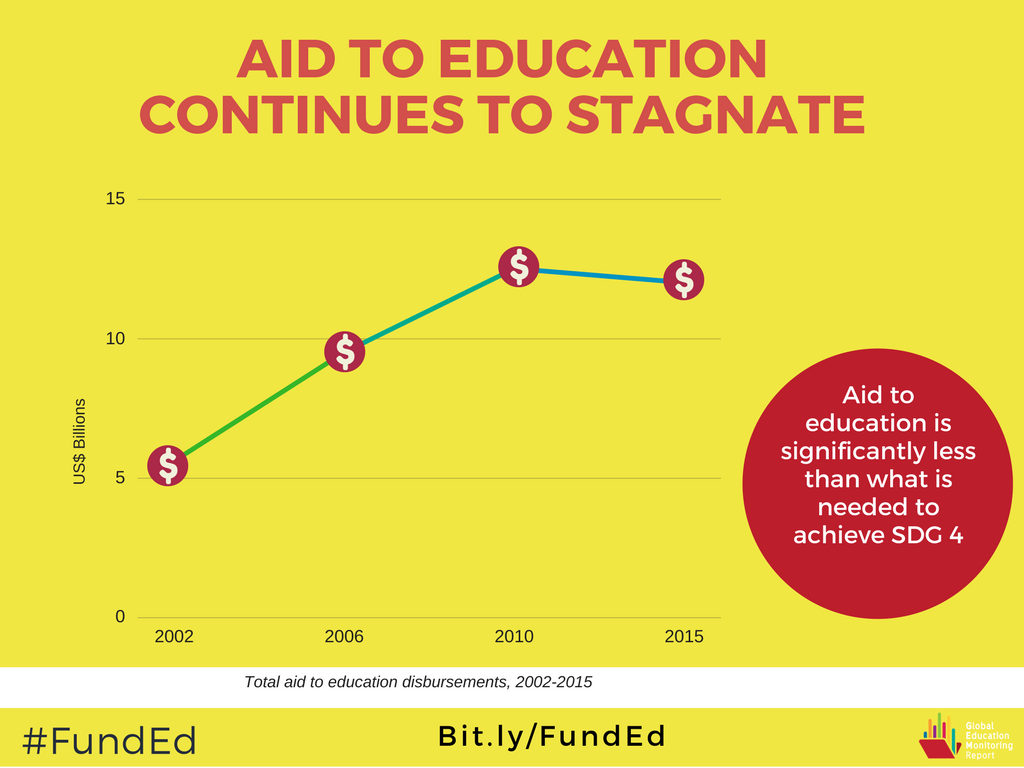 education for all. Aid to education has stagnated at around USD 12 billion a year, the share reaching the poorest countries in Sub Saharan Africa has been falling, and gaps between available finance and the amounts needed to achieve the Sustainable Development Goals may have been increasing.
education for all. Aid to education has stagnated at around USD 12 billion a year, the share reaching the poorest countries in Sub Saharan Africa has been falling, and gaps between available finance and the amounts needed to achieve the Sustainable Development Goals may have been increasing.
Under the SDGs, aid to education should be expected to fall as goals are achieved and the numbers of children in school and learning increase. We saw rapidly accelerating school enrolment and increases in learning in the years after the Dakar World Education Forum and Jomtien. If the reason for the static and declining volume of aid to education was because of these successes, and the demographic dividend that leads to reduced demand for new school places, it would be a cause for celebration.
Alas the progress made over the last three decades is not a sufficient explanation for the declining appetite for aid to education. Better data now shows how unequally the benefits of improved access to education have been spread within countries. Completion rates are strongly associated with household income especially at secondary level. Educational infrastructure is lacking, class sizes remain large, and learning materials are lacking in quantity and quality. It is easy to agree with the GEM Report policy paper that a weakening of the appetite for aid to education is premature.
Differences in Secondary Completion by Household Wealth and Region
 The real difficulties start with the numbers. The policy paper argues that there is now a massive financing gap in education across all low and lower-middle income countries (LICs and LMICs) of USD 39 Billion a year from now until 2030. If true, aid to education would need to increase six-fold compared to 2010 levels to finance the agenda set by the SDGs. This would be equivalent to nearly half of all current aid to all sectors across all countries. This extraordinary level of ambition comes with a number of challenges.
The real difficulties start with the numbers. The policy paper argues that there is now a massive financing gap in education across all low and lower-middle income countries (LICs and LMICs) of USD 39 Billion a year from now until 2030. If true, aid to education would need to increase six-fold compared to 2010 levels to finance the agenda set by the SDGs. This would be equivalent to nearly half of all current aid to all sectors across all countries. This extraordinary level of ambition comes with a number of challenges.
- Increasing aid to education six fold has never happened despite a series of global initiatives since 1990. Though there is some evidence of renewed commitment to educational aid, it is not likely that 50% of total aid will be allocated to education.
- More than half of low-income countries (LICs) receive 5% or more of GDP in external finance and only collect 15% of GDP in domestic revenue to finance public services. These countries are therefore aid dependent for a third or more of government expenditure. More aid to these countries without fiscal transformation would risk making them more aid dependent without a pathway to sustainable development.
- The financial gaps identified are very large and are gaps in recurrent rather than in development funding for capital works. Filling financing gaps for the recurrent expenditure that is mostly used to pay teachers salaries has to continue into the indefinite future.
The policy paper identifies three opportunities to massively increase finance for aid to education. I will assess each in turn.
First the resources of the GPE need replenishment and should be enhanced. If the GPE were to be replenished with USD3.1 billion for the period 2018-20, as is suggested, this would make a significant dent in financing gaps. However, it would be insufficient to provide sustainable recurrent financing across Developing Country Partners (DCPs). Recent research I have completed that will shortly be published by the GPE shows that the recurrent cost of education systems that could provide universal access in LICs is at least USD 33 billion, of which only about 60% is domestically financed; LMICs would require almost USD 90 billion, of which about 75% is currently financed domestically. Across over 80 GPE member countries even a billion dollars a year does not go very far to meet the shortfall in funding, even if it is used catalytically.
Second, the International Commission on Financing Global Opportunity (ICFGO) could mobilise up to USD 10 billion a year in additional finance if it succeeded in leveraging loans with grant money to reduce lending rates to lower middle income countries. This would be more than twelve times current World Bank aid to education and much larger than the GPE. But this would not have an impact on aid to low-income countries. Grant money and guarantees would be used to reduce interest rates on loans to middle-income countries that would otherwise be excluded from concessional rates because of their GDP per capita level. If the objective is to make it easier for lower middle income countries to borrow for education at lower rates then the most efficient solution may be to just change the country income level qualification criteria for such loans. Increased borrowing to cover recurrent costs carries with it various risks, especially where government budgets depend heavily on external financing and where there is over hanging debt.
Third, Education Cannot Wait (ECW) has ambitions to raise USD 3.8 billion by 2020 to be disbursed over several years. This would be a considerable increase in its current funding of about USD 100 million, and would be greater than the amounts needed for GPE replenishment. These two streams of advocacy for funding may compete with each other for a limited pool of finance. Much of the ECW activity would be in countries that could also qualify for GPE support. If ECW is to grow, the difference between it and the other initiatives needs clear demarcation and coordination is needed to justify the transaction costs and ensure harmonisation of different aid flows at country level.
All new methods of using aid to finance education should be tested against some key questions:
- Are they suitable for financing recurrent costs or capital investments? If so what time periods are envisaged?
- What are the transaction costs, commission and management fees for leveraging and managing additional resources and who pays?
- Do some methods of financing education increase dependence and indebtedness?
- How do private sector partners finance their contributions, and are their partnerships sustainable?
- How will new methods of financing education benefit the poorest children?
- If domestic revenue can be increased by 5% of GDP, how would this compare to the new resources raised through innovative finance initiatives?
If the purpose of aid to is to accelerate development towards sustainable outcomes in education two things are essential.
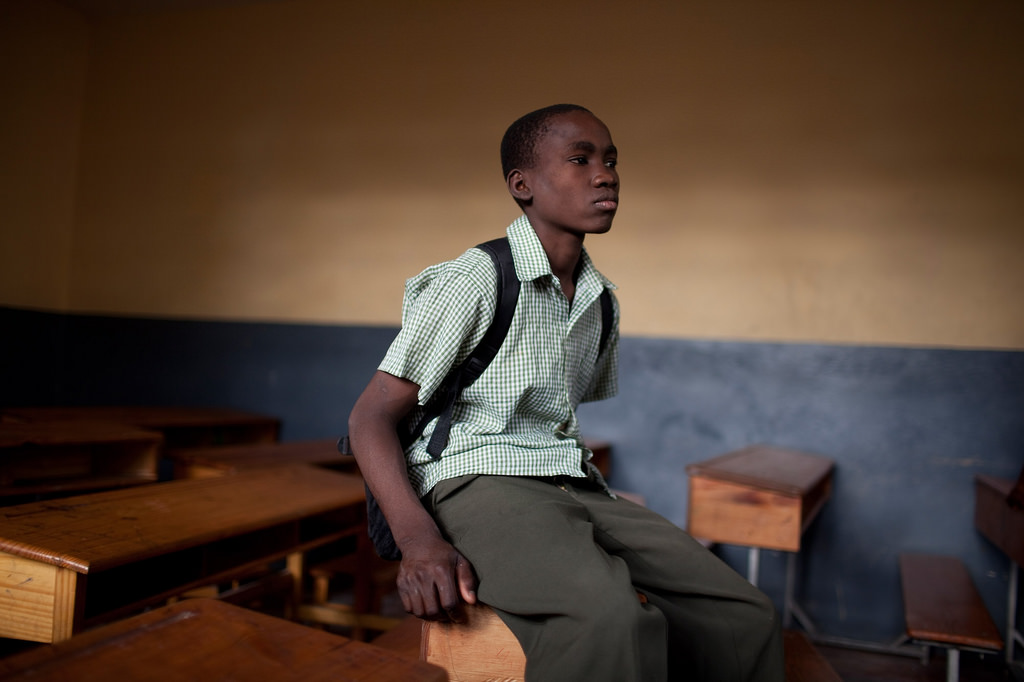
Image: UNESCO/E. Abramson
First, aid must be focused on areas where there is a comparative advantage and long term benefits to external financing. It can be used to promote improved pedagogy, enhance curricula, generate effective learning materials, improve data based decision making, share educational technologies, invest in physical infrastructure, and many other things that support autonomous development. It can also be used to highlight market failures to deliver services to the poorest and to the poorest countries.
Second, aid must be configured so that it does not increase dependence or increase debt. This means that sector plans should provide a clear framework for long term sustainable development. This kind of aid to education is not primarily about meeting short term targets for education defined by cross-sectional indicators. It is about embedding systemic changes that can be sustained for the next generation of children, and the next. Future orientated fiscal reform is an essential part of this process and more important than aid in all but the short term.
Valuing of the future over the present is a core idea for Sustainable Development. This applies to both learning and to resourcing. It should inform the next generation of external assistance to education and lead to sustainable recurrent financing from domestic revenue. It should deliver consistent improvements in access, learning and equity that remain in place well beyond the high tide of aid to education which awaits a new generation of political will from development partners.

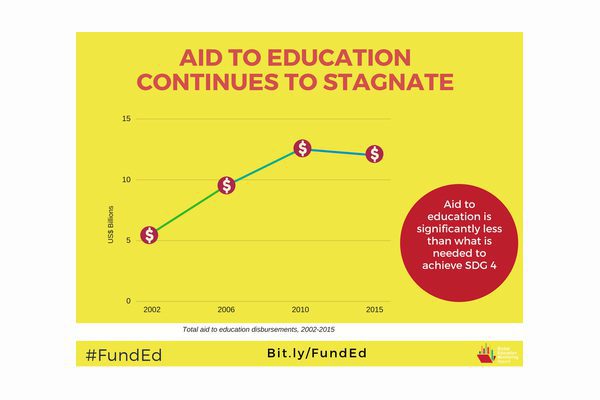
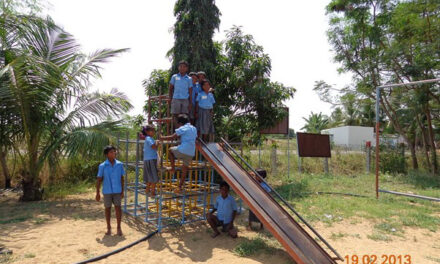
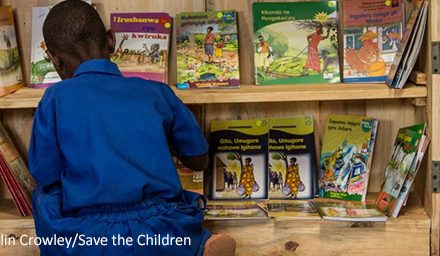


Education protects children both physically and psychologically – it is the best “space” we can create in which children can remain children in the midst of disruption. Education can also be a strong platform to support integrated services for children.